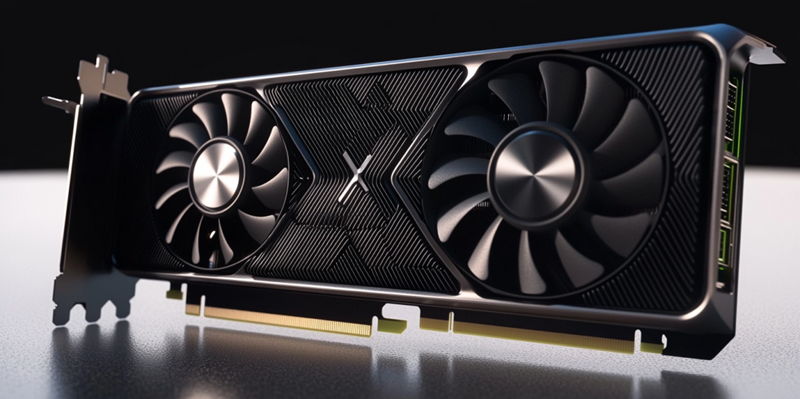The recent leak of specifications for Nvidia’s highly anticipated RTX 5090 and 5080 graphics cards has ignited a flurry of excitement and skepticism across the tech community. According to the well-known leaker kopite7kimi, the flagship RTX 5090 will feature the GB202-300 GPU with 21,760 FP32 CUDA cores, a 512-bit memory bus, 32GB of GDDR7 RAM, and an enormous power consumption of 600W. Despite this increase from the 4090’s 450W, it is said to maintain a two-slot cooler, suggesting a redesigned cooling system. These specs signal a significant performance jump but also raise concerns about power efficiency and environmental impact, which is a growing consideration in today’s tech landscape. In stark comparison, the RTX 5080 is expected to use the GB203-400 GPU with 10,572 FP32 CUDA cores, a 256-bit memory bus, 16GB of GDDR7 VRAM, and 400W power usage, up from the 4080’s 320W. The limited VRAM and substantial power consumption of the 5080 have attracted criticism, especially given its likely high price and comparison to previous, less powerful models like the scrapped 4080 variant with 12GB VRAM.
Flagship RTX 5090: Power Versus Efficiency
The specifications of the RTX 5090, particularly its 21,760 FP32 CUDA cores and 32GB of GDDR7 RAM, suggest that Nvidia is aiming to deliver groundbreaking performance in its next-gen Blackwell series GPUs. However, the card’s 600W power consumption is a substantial leap from the RTX 4090’s already high 450W. While this reveals Nvidia’s intent to push the boundaries of raw performance, it also brings up questions regarding the cooling and powering of such a behemoth. Maintaining a two-slot cooler hints at a potentially revolutionary cooling design, but the implications for the typical user, who may not have expansive space or advanced cooling systems, remain unclear.
The environmental impact of such high power consumption cannot be overlooked either. In an era where sustainability is increasingly important, a 600W graphics card could face heavy scrutiny. Households may see significant increases in energy bills, and data centers may need to reassess their environmental strategies, placing Nvidia in a challenging position. To balance this power surge, Nvidia will need to push forward in innovating cooling solutions that are not only efficient but also environmentally friendly and accessible for users without industrial-grade cooling systems.
RTX 5080: Performance and Value Proposition
On the other end of the spectrum lies the RTX 5080. Equipped with the GB203-400 GPU, 10,572 FP32 CUDA cores, and 16GB of GDDR7 VRAM, the RTX 5080 is expected to consume 400W of power. This increase from the 4080’s 320W may not seem enormous, but it has already sparked debate among tech enthusiasts. The limited 16GB VRAM, especially compared to the potentially lower performance gains, has disappointed many who were hoping for a substantial upgrade. The RTX 5080’s specifications suggest a less favorable performance-to-cost ratio, stirring disappointment among enthusiasts and industry watchers who expected a more balanced offering.
Critics argue that the RTX 5080 might not offer a compelling enough reason for gamers and professionals to upgrade, especially if the price point remains high. In contrast to the impressive leap in specifications seen with the RTX 5090, the 5080 appears to be a more modest advancement, potentially aimed at filling a mid-range gap. However, with its less impressive performance metrics, the RTX 5080 could struggle to justify its cost, particularly if Nvidia does not offer a more appealing price tag. This predicament underscores the need for Nvidia to reconsider its strategy for mid-tier GPUs, focusing on delivering value without compromising on performance.
Industry Response and Nvidia’s Strategy
The industry’s reaction to these leaks has been mixed, with significant skepticism directed towards the RTX 5080 and cautious optimism for the RTX 5090. Enthusiasts and experts alike have voiced concerns about the RTX 5080’s value proposition, urging Nvidia to address the growing demand for affordable yet powerful GPUs. Amid a global economic climate where consumers are more price-conscious than ever, Nvidia’s success may hinge on how well it can balance cutting-edge performance with reasonable cost.
Nvidia’s potential strategies include investing in advanced cooling solutions and optimizing power efficiency to alleviate concerns about environmental impact and accessibility. While the RTX 5090’s specs showcase technological prowess that could set new industry standards, the overarching trend towards high power consumption demands a deeper evaluation of sustainability practices. Scaling innovation to include more compact, cost-effective, and energy-efficient designs may be crucial for Nvidia in maintaining its leading position in the market.
Balancing Innovation with Accessibility
The recent leak of Nvidia’s eagerly anticipated RTX 5090 and 5080 graphics cards has sparked a wave of excitement and doubt within the tech community. As reported by renowned leaker kopite7kimi, the flagship RTX 5090 will incorporate the GB202-300 GPU with an impressive 21,760 FP32 CUDA cores, a 512-bit memory bus, 32GB of GDDR7 RAM, and a hefty power draw of 600W. Despite this increase from the 4090’s 450W, it is expected to retain a two-slot cooler, implying a revamped cooling system. These specs point to a substantial performance boost but also raise questions about power efficiency and environmental impacts, issues of growing importance in today’s tech world.
On the other hand, the RTX 5080 is set to use the GB203-400 GPU with 10,572 FP32 CUDA cores, a 256-bit memory bus, 16GB of GDDR7 VRAM, and 400W power usage, up from the 4080’s 320W. The reduced VRAM and significant power consumption of the 5080 have drawn criticism, especially considering its expected high price and its comparison to older, less potent models like the canceled 4080 variant with 12GB VRAM.

